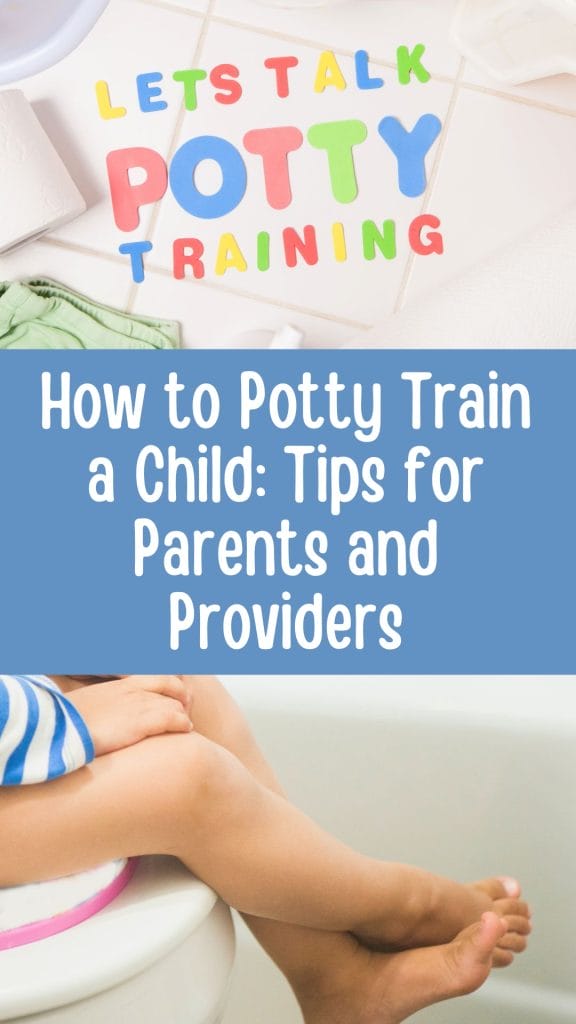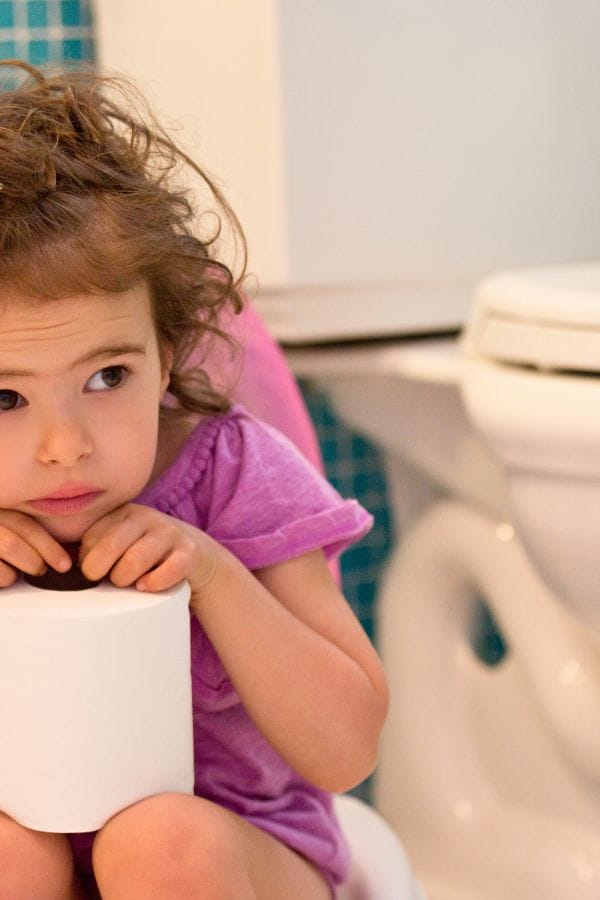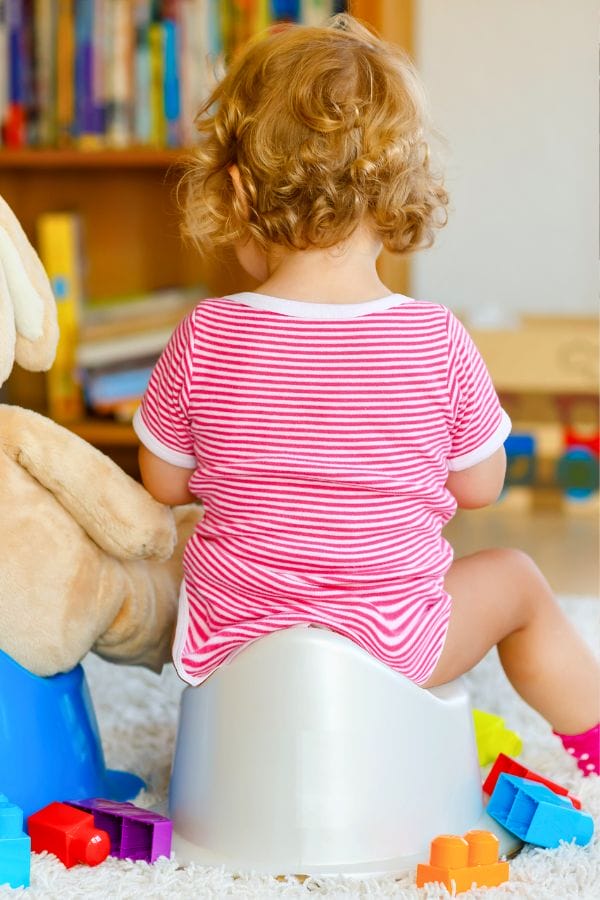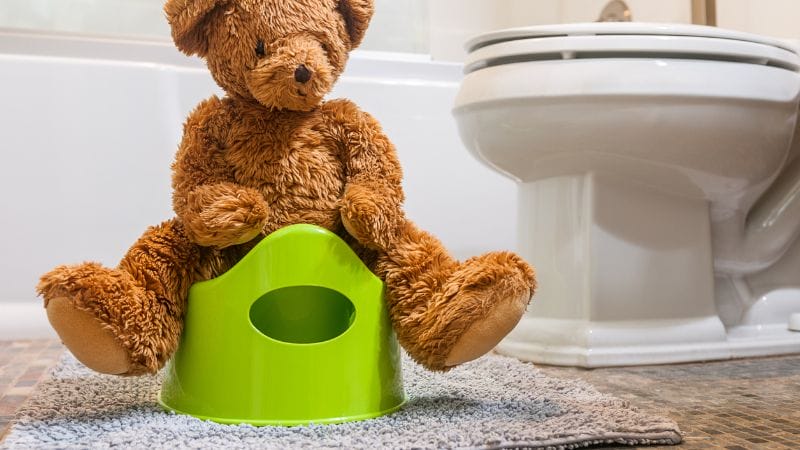How to Potty Train a Child: Tips for Parents and Providers
This page may contain affiliate links. Learn More.
Learning how to potty train a child can come with challenges and requires patience and consistency. But it’s an exciting accomplishment when a child can master it. Knowing how to do it well is a must when running a home daycare.

Potty training is a major milestone in a child’s development, marking their transition from diapers to independence. Every child is different, and what works for one may not work for another. This guide provides practical tips for parents and providers to help make potty training a positive and stress-free experience.
After potty training close to 100 kids over the past 30 years, I have a few hard and fast rules that usually bring success. The number one thing I’m going to assure you is that if a child doesn’t want to use the potty, nothing you do can make them successful. They have to decide for it to work.
Some people punish, spank, yell, etc., but if you have a stubborn child who likes control, this is something they can control no matter what. And they will. The more you try to control them, the more accidents they will have. I promise.
If your child is stubborn, be prepared for a later potty training experience. Usually, it takes them longer to make their mind up. Always keep things relaxed. Remember, accidents are going to happen and everyone makes mistakes.

Learning how to potty train is a major change for both children and caregivers. Whether you’re a parent navigating this complex process for the first time or a childcare provider helping little ones through the potty training process, finding the best approach can make all the difference. The American Academy of Pediatrics recommends starting when children show signs of readiness, which often happens between 18 and 36 months of age, though some kids may take a bit longer.
There is no single easiest way to successful potty training, but using best practices can help minimize power struggles and make the experience more positive. Some children prefer a little potty in the living room, while others feel comfortable with a toilet seat in the bathroom. Using lots of praise, and switching to big-kid underwear instead of disposable training pants can help motivate them.
Remember, every child is different. Don’t beat yourself up about struggles with the potty, children handle it in different ways. I’ve had kids that potty trained themselves at 20 months, and kids that still say no at nearly 4 years old, or even longer. They have to be ready and that time is different for every person.
It’s also important to be patient. Expect accidents, especially in the early stages, because gaining bladder control and bowel control takes time. Encouraging frequent use of the toilet and dressing children in fewer clothes can make things easier. If your child resists, don’t force the issue; waiting for the right time can prevent setbacks and frustration.
Whether you’re tackling potty training at home or in a childcare setting, these helpful steps can guide you through this exciting milestone. It’s going to be okay, you can do this.

Signs Your Child is Ready for Potty Training
Not all children are ready to potty train at the same age. However, most are ready between 18 months and 3 years old. Look for at least a few of these signs:
- Staying dry for two or more hours at a time.
- Showing interest in the toilet or wanting to watch others use it.
- Telling you when they need a diaper change.
- Hiding when having a bowel movement.
- Pulling down their pants independently (and be able to pull them back up)
- Showing discomfort in a wet or soiled diaper.
- Being able to follow simple instructions.
- Asking to use the potty.
If your child is showing multiple signs, it may be a good time to begin potty training. If they are showing just one, they are probably not ready yet.
Choosing the Right Potty Training Method
There are different potty training approaches, and choosing the right one depends on your child’s personality and your family’s lifestyle.
A. The Child-Led Approach
- Encourages children to take the lead.
- No strict timelines—introduce the potty gradually.
- Ideal for easy-going children who need time to adjust.
B. The Scheduled Approach
- Parents set a schedule for potty breaks.
- Children are reminded every 1 hour to sit on the potty.
- Works well for children who respond well to routines.
C. The 3-Day Method
- Intensive, focused training over three days.
- Child wears underwear only and is taken to the potty frequently.
- Best for parents who can dedicate three full days to the process and stay home for the whole time.
Choosing the method that aligns with your child’s temperament and your availability will help create a smoother transition.

Setting Up for Success
Before starting, ensure you have the right tools and environment:
- A Child-Friendly Potty: Choose a stand-alone potty or a potty seat that fits on the toilet. I personally don’t prefer a potty chair. We use the grown up toilet. Ours is a little low to the ground and we have a step stool. But I find that starting right on the regular potty helps prevent a lot of chaos later.
- Training Underwear or Pull-Ups: Helps children feel wetness while preventing big accidents. Pull ups are great to start in, but kids will potty train much faster in underwear because they can feel when they are wet. Pull ups are a must for daycare or going out other places obviously. We can’t have 7-12 kids peeing on the floor and furniture. But they are only a temporary solution. If you have had your child in pull ups for months, it’s time to start over in diapers and revisit the idea later.
- Step Stool: Allows them to reach the toilet and sink easily.
- Potty Training Books or Videos: Helps them understand the process in a fun way.
- Spend a lot of time beforehand talking about the potty: For several months before I try to start potty training a child with their family, I talk about the potty every time I change them. Wouldn’t it be cool to have big boy underwear like daddy wears? What kind of underwear would you like? Do you want to use the potty like your friends? I listen for cues in their answers.
Creating a positive, engaging environment will make potty training feel less intimidating. Potty training is a big part of our day here at Little Sprouts. There is always someone about to start, working on it, or who has been potty trained within the past year. So it’s in our conversation naturally and consistently. Be open about it and talk about it calmly and often.
Consistency is key when potty training. Follow these steps to create a structured routine:
- Introduce the Potty – Let your child sit on the potty fully clothed to get comfortable.
- Set Regular Potty Times – Encourage them to sit on the potty after meals, before naps, and before bedtime.
- Praise and Encourage – Celebrate small successes with claps and verbal praise.
- Teach Proper Hygiene – Show them how to wipe properly, flush, and wash hands.
Having a daily potty routine will help build consistency and encourage habits that stick.

Handling Accidents with Patience
Accidents are a natural part of potty training. Respond calmly and avoid punishment:
- Stay Positive: Reassure your child that accidents are okay.
- Clean Up Together: Teach them how to help clean up.
- Reinforce Good Habits: Remind them to use the potty next time.
- Use Nighttime Protection: Many children take longer to stay dry at night, so using training pants or waterproof mattress covers can help.
Patience and encouragement will help your child feel more confident in their progress.
Overcoming Common Challenges
Potty training comes with hurdles, but staying proactive can help overcome them.
Fear of the Potty
- Let them decorate the potty with stickers.
- Read potty training books to make it fun.
- Avoid forcing them, try again later if they resist.
Refusing to Sit on the Potty
- Offer small rewards like stickers or a fun song.
- Try using a favorite stuffed animal as an example.
- Allow them to sit without pressure.
Trouble with Bowel Movements
- Ensure they get enough fiber and water to prevent constipation.
- Encourage them to sit on the potty after meals.
- Offer privacy if they prefer to be alone.
Addressing these challenges with patience and creativity will help your child feel comfortable and motivated. Remember, they feed off of your emotions, so make them good ones.
When to Take a Break from Potty Training
If potty training becomes stressful, taking a short break might be the best option. Consider pausing if:
- Your child is consistently resisting potty time.
- Major life changes (moving, new sibling, starting daycare) are happening.
- They are not emotionally ready.
It’s okay to stop and try again in a few weeks or months when your child is more receptive. Back in the beginning of my daycare career, I had kids trying to potty train for a year sometimes. I didn’t realize that the break would reset everything. Don’t make my mistakes.
Transitioning to Nighttime Potty Training
Nighttime dryness takes longer than daytime training. Here are some tips:
- Limit liquids an hour before bedtime.
- Have your child use the potty before bed.
- Use waterproof mattress covers.
- Be patient—nighttime control can take months to years.
Encouraging your child while allowing them time to develop control naturally will lead to success.
Celebrating Potty Training Success
Once your child masters potty training, celebrate their achievement!
- Plan a small reward, like a special outing.
- Let them pick out their favorite underwear.
- Give plenty of hugs and high-fives.
Recognizing their success builds confidence and reinforces positive habits.
Potty training is a journey that requires patience, consistency, and encouragement. Every child progresses at their own pace, so adapting to their needs and offering positive reinforcement will make the process smoother. Whether you use a child-led approach or structured training, creating a supportive and stress-free environment will set your child up for success. Embrace the milestones, celebrate small wins, and remember that every step forward is an achievement!
More Tips for Parents and Providers
For more ideas to help kids grow up well, check these out:
- Reasons for Picky Eating to help you understand WHY your kids won’t eat.
- Easy Steps to Get Kids to Eat Healthier provides tips on how to introduce more foods to kids.
- How to Build Confidence in Kids has ideas on how to help kids believe in themselves.
- 3 Ways to Help Your Child Make Friends if your child is struggling to connect with other kids.







